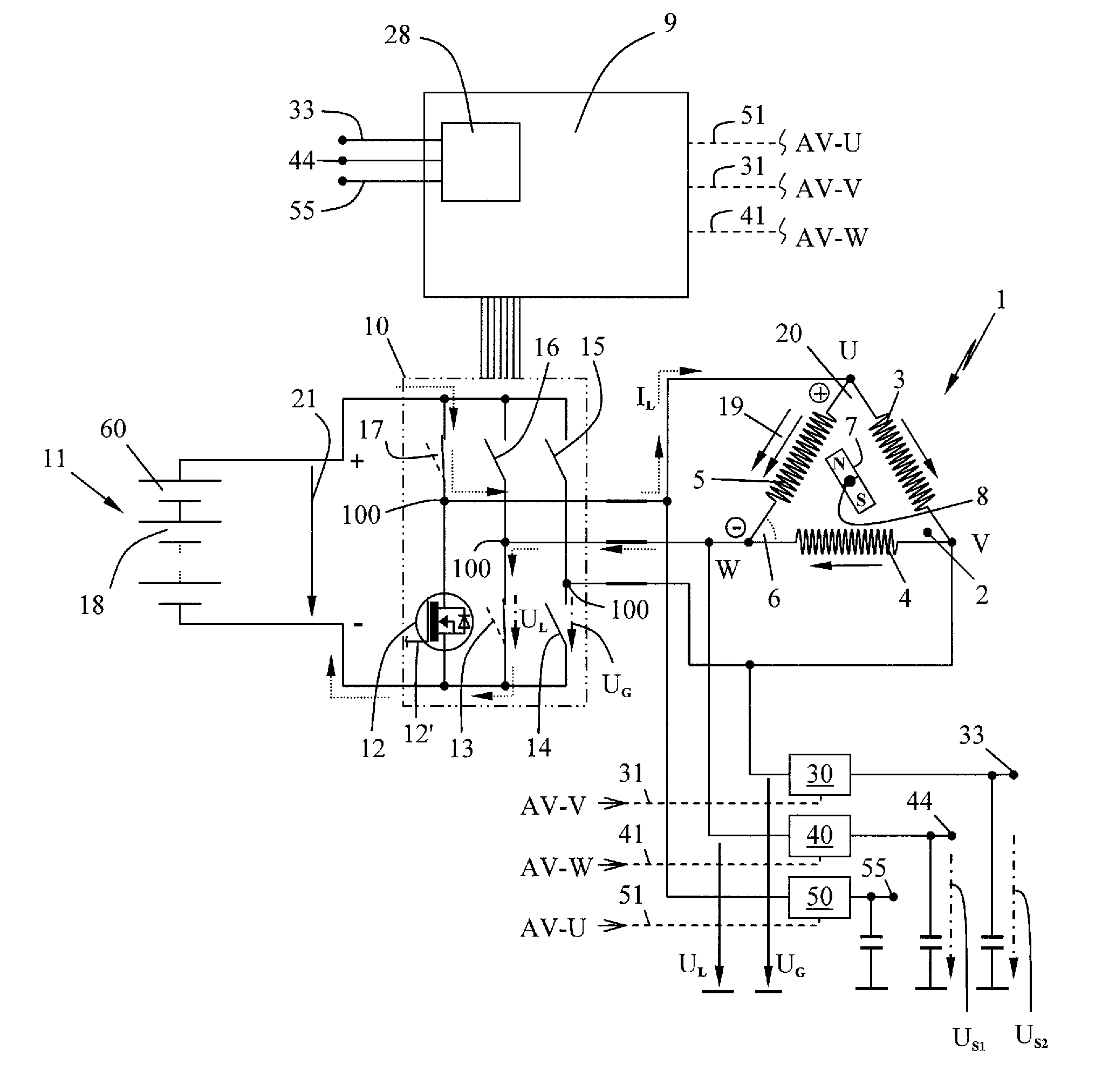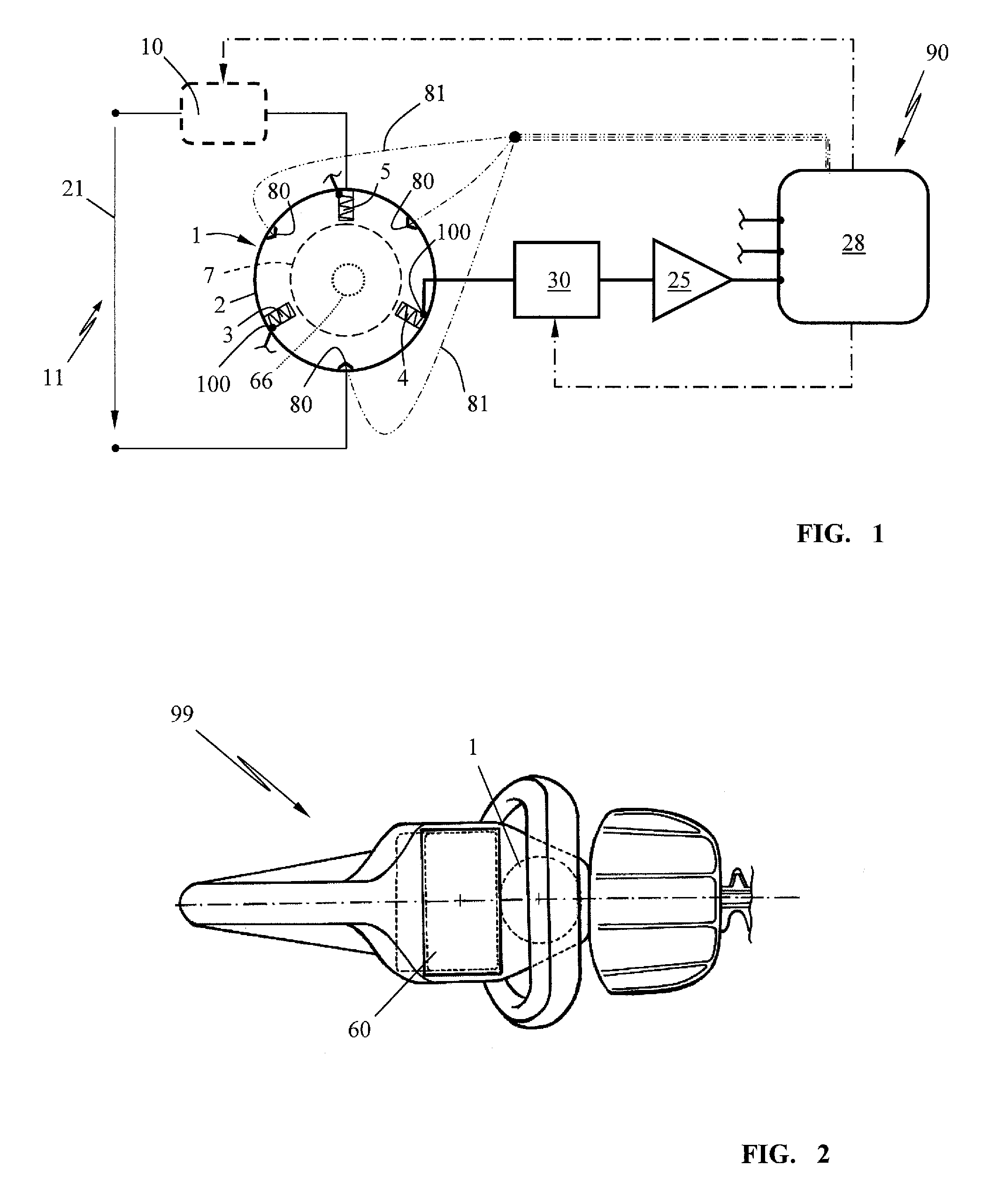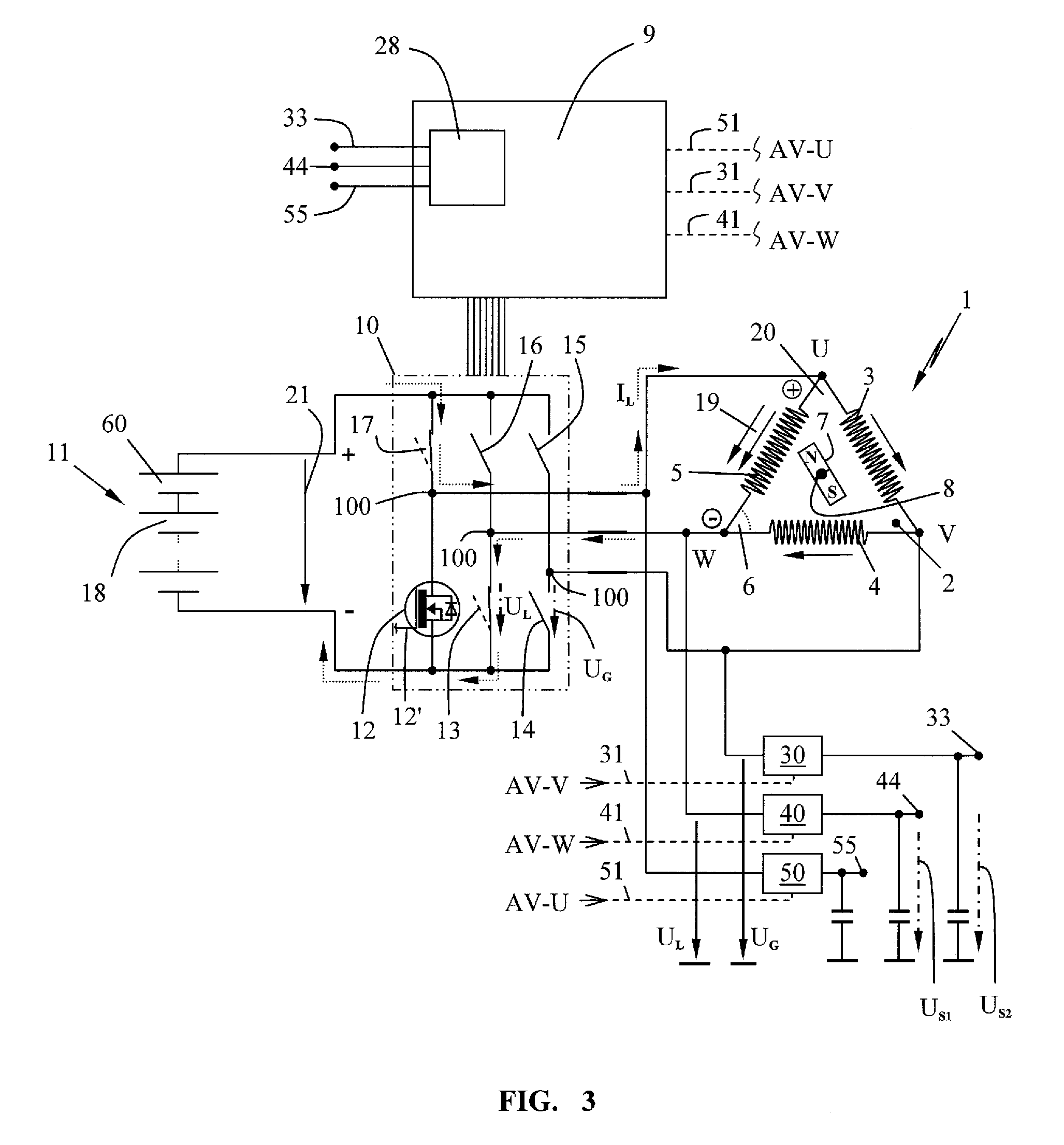Battery operated electric motor in a work apparatus
a work apparatus and battery technology, applied in the field of electric motors, can solve the problems of inability to use further operating signals of the motor, large electronic complexity of operating an electronically commutated motor, and inability to accurately determine the rotational position of the motor, etc., and achieve the effect of accurate rotational position
- Summary
- Abstract
- Description
- Claims
- Application Information
AI Technical Summary
Benefits of technology
Problems solved by technology
Method used
Image
Examples
Embodiment Construction
[0027]FIG. 1 shows the principle of the inventive concept on the basis of a schematic. A rotor 7 rotates in a stator 2 of an electric motor 1, wherein the electric motor 1 can be a DC motor (direct current motor) with or without brushes or carbon. The energy source 11 illustrated is a battery block 60 (FIG. 2) and provides a DC voltage as supply voltage 21; a rated voltage of 36 to 42 V is expediently provided depending on the charge state of the battery block.
[0028]The stator 2 of the electric motor 1 has a plurality of windings (3, 4, 5) for generating a rotating field that exerts a driving torque 24 on the rotor 7. In one simple embodiment of a DC motor, the supply voltage 11 is applied to the windings (3, 4, 5) via a mechanical commutator 66, wherein the commutator 66 with rotation of the rotor 7 energizes only the windings assigned to the particular rotational position, as a result of which the rotor 7 is driven in the rotational direction. The current through a winding can be ...
PUM
 Login to View More
Login to View More Abstract
Description
Claims
Application Information
 Login to View More
Login to View More - R&D
- Intellectual Property
- Life Sciences
- Materials
- Tech Scout
- Unparalleled Data Quality
- Higher Quality Content
- 60% Fewer Hallucinations
Browse by: Latest US Patents, China's latest patents, Technical Efficacy Thesaurus, Application Domain, Technology Topic, Popular Technical Reports.
© 2025 PatSnap. All rights reserved.Legal|Privacy policy|Modern Slavery Act Transparency Statement|Sitemap|About US| Contact US: help@patsnap.com



